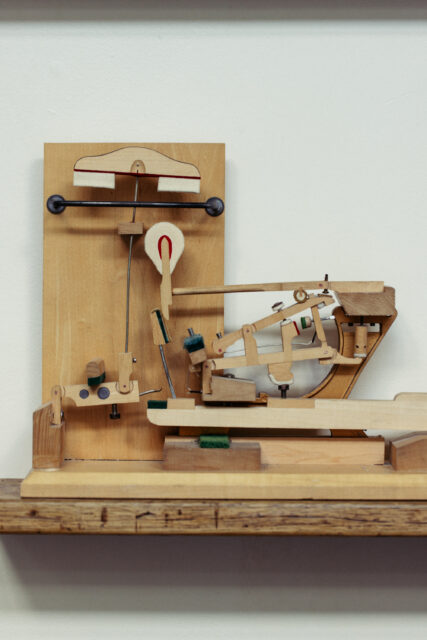Frequently Asked Questions
Why should I have my piano tuned every 6 months?
Six months is the usual amount of time in which the piano becomes noticeably out of tune, and tuning twice a year also compensates for the higher temperatures and humidity in the summer, and cold and dry weather in the winter. This can make the piano become unstable due to the expansion and contraction of the tuning pins, pin-block, and strings. Tuning a piano regularly helps keep these and the string tension consistent and therefore the tuning will last longer. It is recommended to have your piano tuned at least every 6 months, and more often if you are a pianist, music teacher, or use your piano on a regular basis. I offer discounts to individuals and venues that have their pianos tuned more than twice a year.
How long does it take to tune a piano?
A piano that is moderately out of tune will take around an hour to complete a full tuning. Naturally, pianos that are very out of tune will take longer. If a pitch raise is needed then two visits will be made. Firstly to pitch-raise the piano, which will take about 40 minutes, and secondly a full tuning, about an hour. The age, make, and condition of a piano will all affect the tuning time, but not by much.
What is a pitch raise?
Pianos that have not been tuned in several years are likely to be very out of tune and very flat; the oldest pianos can be over a tone out (ie. A sounds like G). When a piano like this is tuned it will fall out of tune very quickly. Think of a piano string as a very thick piece of elastic: the further it is pulled, the faster it will come back. Because of this, 2-3 quick, rough tunings are done before the main tuning to adjust the tension of the strings and plate. This process is called a ‘pitch-raise’, and the new pitch is A440 concert pitch (however this can be adjusted to A442 or a pitch of preference). Pitch raises are highly recommended for all pianos but especially pianists and students, because the piano at A440 allows for interaction with other musicians and recorded music. On very old pianos, pitch raised might not be possible due to the risk of strings breaking, but this and all other work is discussed before being undertaken.
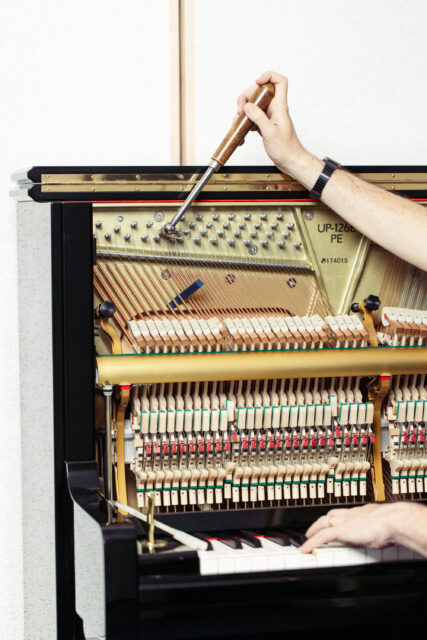
I want to buy/sell a piano. How much is it worth?
Generally speaking, the older a piano is the less it will be worth. Older pianos tend to have less stable tuning, a less consistent sound and touch, and general wear-and-tear. These are the primary factors for the value of a piano, but there is an aesthetic element as well (the appearance of the piano). Pianos with cracks or chips in the cabinet or soundboard will lower the value, as well as corrosion on the strings or hammers. I offer assessments for all pianos, where I will give a price estimate, and notify you of any structural, cosmetic, and action issues that are present which could affect the piano. This can save significant amounts of money in the long term due to pianos being expensive, and buyers and sellers often judging the value of the instrument by appearance only.
I want to move my piano. Who do I contact?
Pianos are the heaviest of musical instruments. This is because of the cast-iron plate inside. Because of this weight, moving a piano is a very difficult job and is not recommended for anybody except professional piano movers. Many regular-moving companies will say that they move pianos, but be wary because many movers do not know how to carry them properly; especially up and down stairs. Many movers also do not have insurance for pianos, which can be worth more than the rest of the furniture in a house combined. I am in contact with several piano moving teams in London who are very experienced, are insured, and we use them regularly. Please send us a message for more information.
What is a piano action?
The piano action is the removable section of the piano which comprises the hammers, dampers, and other components that transfer the momentum of the pianist’s touch on the keyboard to the strings. This section contains thousands of intricate parts that work together seamlessly. Every part of the action can be adjusted to keep the touch and feel throughout the piano consistent.
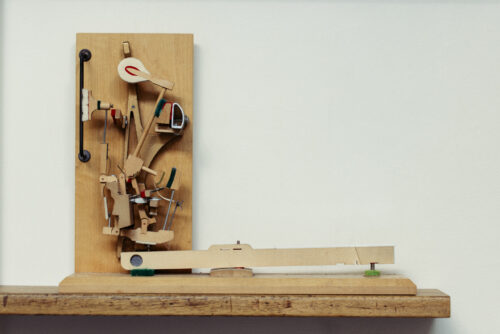
What is regulation?
Pianos are complex contraptions. They require periodic maintenance so that the touch throughout the piano is even. By adjusting the components of the action and the keys; the feel, weight, responsiveness, and timing of the piano action can be completely changed. This is known as regulation. Dozens of common issues with pianos can be solved by regulation; examples such as sticking keys, dampers not damping, and misaligned hammers. Many pianists have their own preferred touch and the regulation can be customised to suit their needs. These include key height, depth of touch, hammer distance to strings, and more.
What is voicing a piano?
The hammers of a piano strike the strings, which makes the unique sound of the piano. However much of the timbre of this sound comes from the hammers themselves. Voicing is the art of shaping the sound of a piano hammer by filing away the grooves that appear over time, and using needles and occasionally lacquer to adjust the brightness, sustain, and tone of the piano. This quality can be extremely varied and individual to different brands and ages of pianos. Voicing a piano is a very delicate process and can only be achieved when a piano is in very good tune. The effects of voicing are extremely noticeable and can unleash a pianos sound; in the sense that it can sound like when it was brand new. This is especially true of high-level grand pianos.
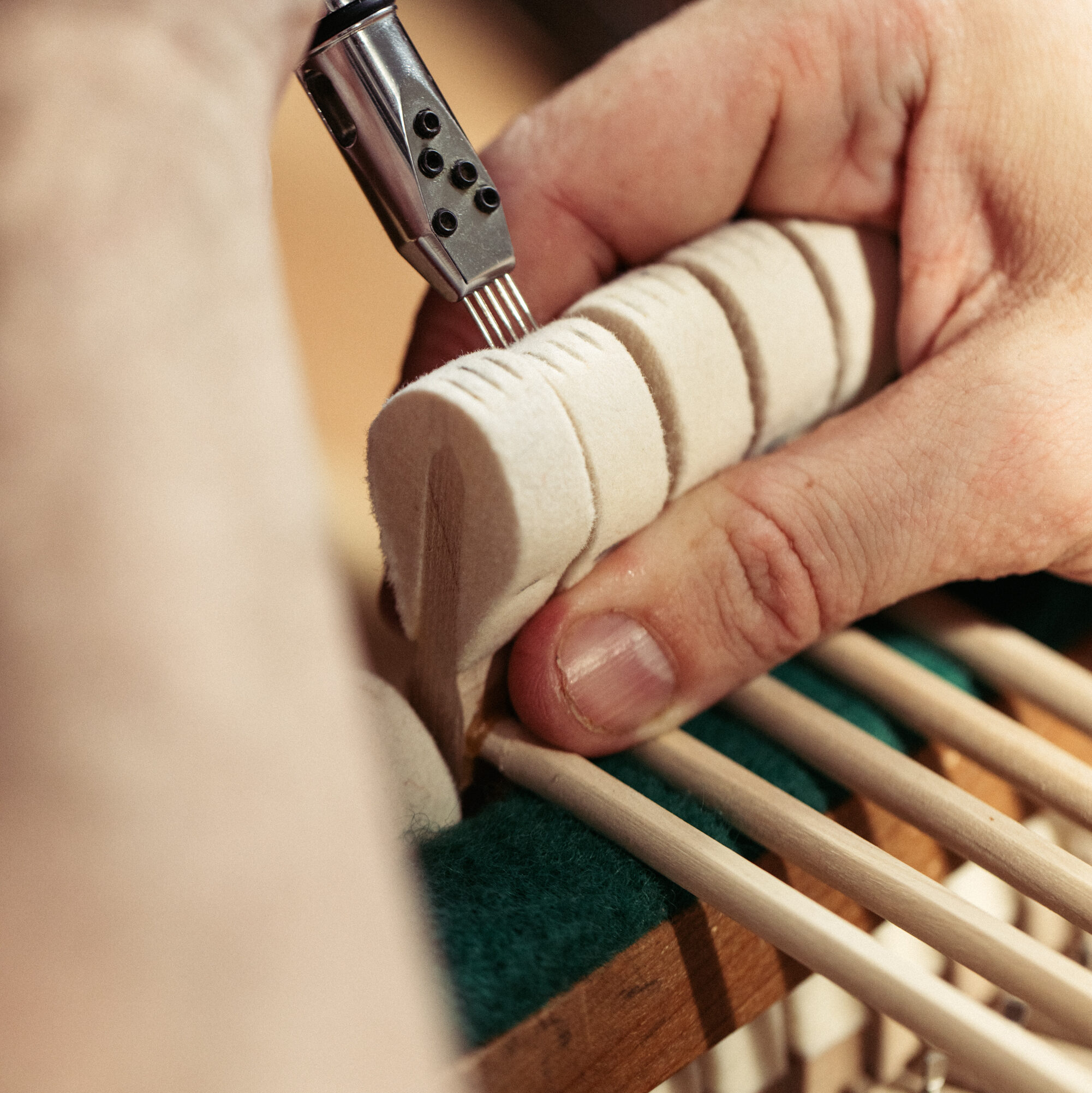
How is a piano valued?
Pianos are expensive instruments, but there is a wide range of price and quality. Brand new they can cost as high as £180000, or as low as £1500. Regardless of price, a piano is similar to a car in its long-term value: A brand-new piano will immediately lose a percentage of its value when it is bought, and then will slowly decrease in value over a period of several decades. Some pianos, particularly fine antique grand pianos and novelty pianos (Elton John or Oscar Peterson’s piano for example) will remain high in value because of their rarity. Many of these older pianos, notably Steinway, are completely refurbished and significantly increase in value. In fact, there are now many piano businesses that solely rebuild older grand pianos and resell them. Unfortunately, the reality is that most pianos, particularly cheaper uprights, will eventually over a period of many decades become worthless. Piano rebuilders will often value a piano like a car: If a car crashes and the repair costs more than the value of the car, then it is written off. Pianos are the same, except the ‘crash’ happens over a long time! This is why the majority of rebuilds are the highest-quality grand piano manufacturers such as Steinway & Sons, Bösendorfer, Blüthner, Bechstein, and Fazioli.
How is a piano tuned?
Tuning a piano is a process that requires much finesse and takes many years to master, and to explain in full is quite lengthy. However, in brief, a piano is tuned by adjusting the pitch of a particular string by turning the tuning pin the string is looped around with a tuning hammer. Piano strings are under a lot of tension so this ‘hammer’ is very strong. Firstly a temperament is set in the middle range of the piano where the tuning is the least difficult. This is followed by tuning the octave and then unisons of notes in the treble and bass. This is a time-consuming process as there are over 200 strings in a piano. Finally, the temperament is checked again, and small adjustments are made to strings that are more out of tune.
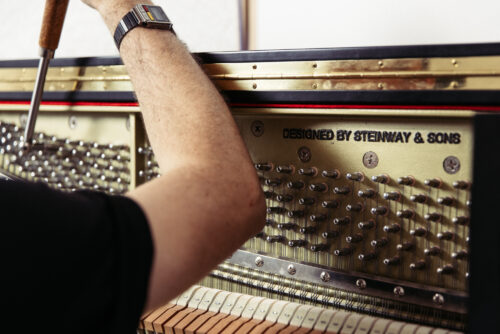
How is a piano rebuilt?
Pianos are manufactured to a high standard, but they do not last forever. The condition of any piano will deteriorate, with corroded strings, worn hammers, dry felts, cracked keys, a cracked soundboard, and very loose tuning pins being several of hundreds of factors that affect pianos over time. This is especially true for pianos that have been exposed to frequent changes in climate and humidity. With some pianos that are more valuable, usually grand pianos, the possibility of rebuilding is present. Rebuilding is literally what it is: taking the piano and rebuilding it from the bottom up. There are different types of rebuilding; often only the strings, tuning pins, and action parts will be replaced. In more extreme cases, and most often with older fine grand pianos (Steinway, Bechstein, etc.) everything but the rim (i.e. the cabinet or case) and the plate will be replaced. This means a new soundboard, a new pinblock, and refinishing the case.
